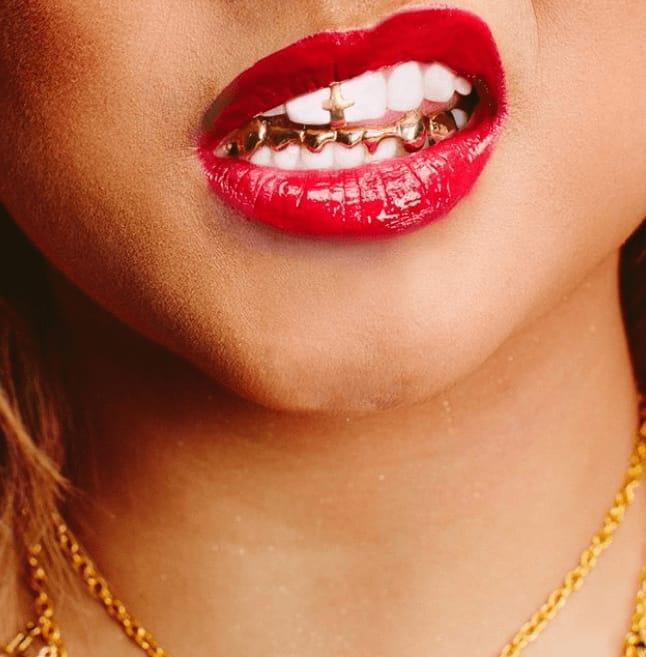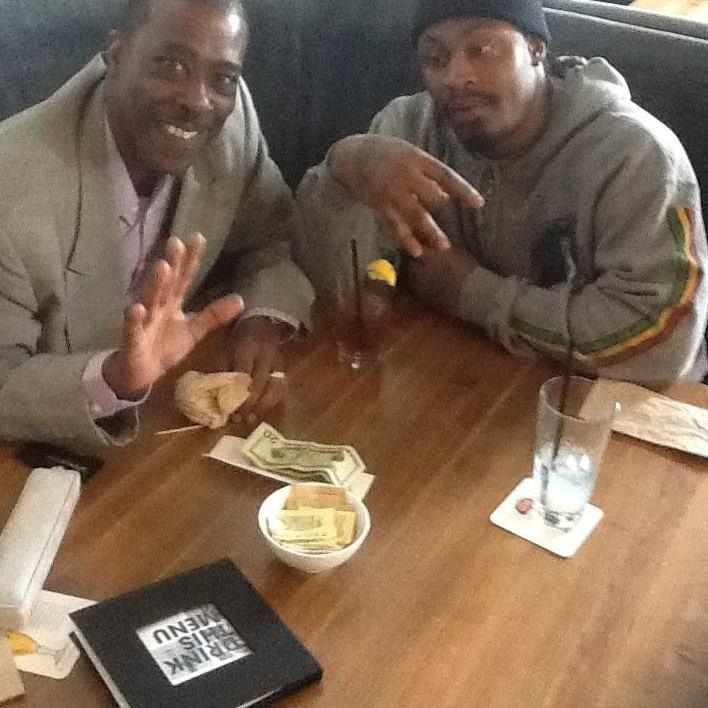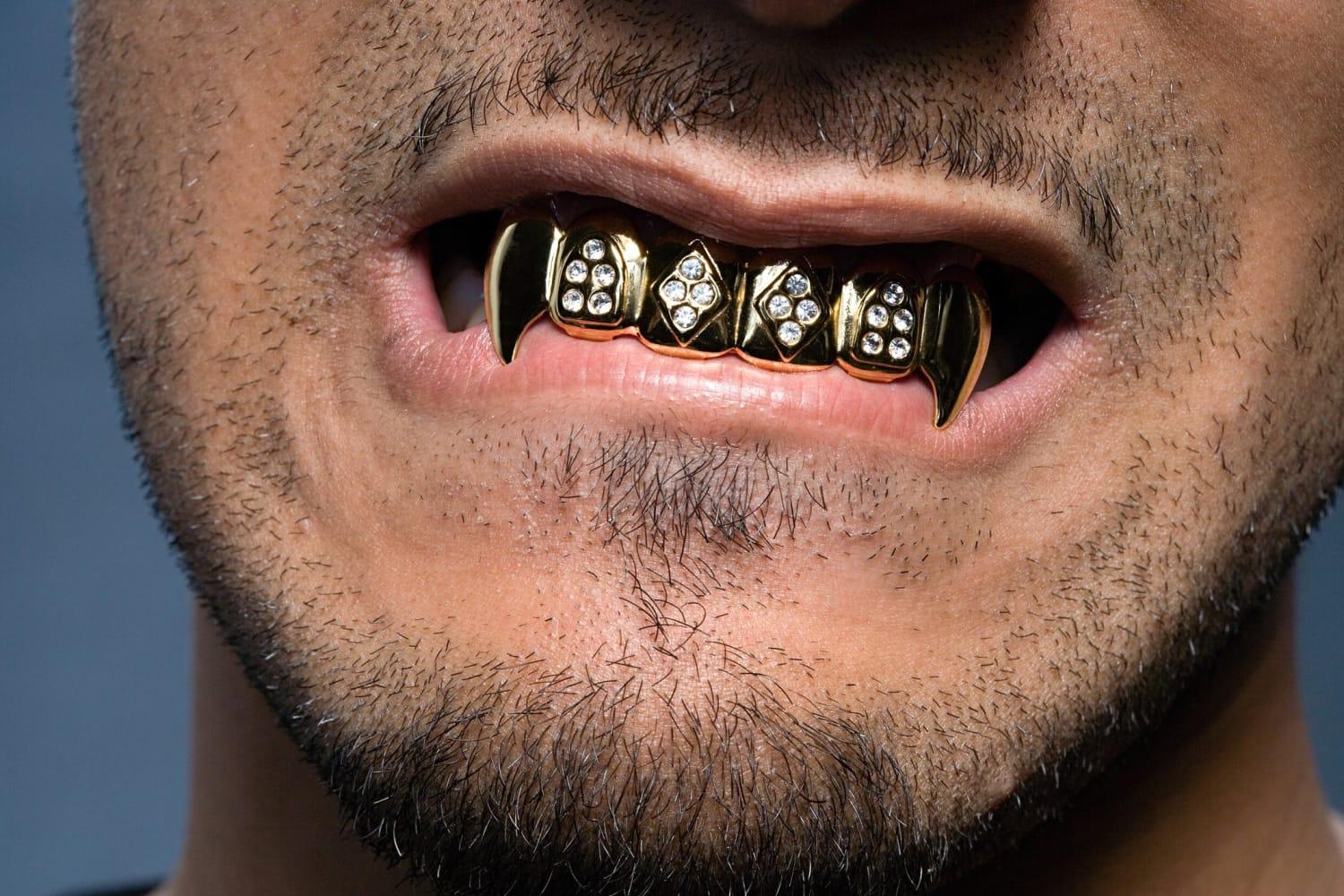GRILLZ: HOW THEY BECAME A HIP-HOP CULTURE ICON
What is the most iconic kind of fashion in hip-hop?
Is it hoodies and sportswear from brands like Supreme and Rocawear, or big-name shoes like Timbalands and Air Jordans?
What about bling, such as gold chains, ice, or necklaces with giant clocks? You can call us biased, but we think grillz — sometimes spelled grills — are the best answer. It is difficult to get more brazen than lining your teeth with valuable metals and jewelry.
Fans take the image of the gold-toothed rapper for granted nowadays, rarely batting an eye when someone else emerges with grillz. However, this practice was not always so notorious and popular. Someone, or several someones over a long stretch of time, had to introduce it to the scene. Who were they, and what inspired anyone to do this in the first place? We will answer these questions here in our condensed history of grillz.
Grillz in Ancient History
As we previously wrote in our guide on how to order grillz online, “The use of gold teeth is an old phenomenon.” Perhaps the oldest recorded instances of people wearing the metal on their dentures occurred as early as 630 BC. The Etruscans of ancient Italy were known for their gold working prowess and unusual degree of gender equality, but not for their oral hygiene. Wealthy women would pay to have teeth removed and replaced with hollow gold teeth, tied to healthier teeth by a gold band. When the Romans came, saw, and conquered, the practice ended.
Many centuries later, and on the other side of the world, Mayan royals would go a step further than replacement teeth and bands. With sophisticated dentistry, their doctors would create holes in their teeth — sometimes every single tooth — using a copper tube. They would then shape a precious gem, such as jade and turquoise, in such a way that it perfectly fits into the hole. A Vice article on the subject claims that this practice was more than a sign of wealth. With jade representing “plant growth, agriculture, and sustenance,” these early grillz served as a “visual and permanent promise that everyone would be taken care of.”
Furthermore, the same article describes teeth fillings among the Vikings starting around 900 AD. Men would file ridges into their teeth, only adding to their intimidating appearance. Researchers speculate that these warriors picked up the habit from another culture on their extensive travels. Still, one has to question if the Vikings simply adding grooves to their teeth would truly count as an early example of grillz. Tooth modification alone is not enough — precious metals or jewels must be involved.
The Filipinos have that part covered. As early as 4000 years ago, the chiefs and other powerful people on these islands capped or outright substituted their teeth with gold. Much later, European travelers, merchants, and missionaries would report of Philippines natives with gold pegs in their teeth. They were forced to end this long and rich cultural custom for the same reason that the Mayans did: Spanish colonialism.
Modern Grillz Before Rap Music
Embedding gold in one’s teeth or otherwise ornamenting one’s mouth with precious metals is surprisingly universal. Even when conquistadors quelled the practice in one part of the world, it seems another civilization would independently take it up. In some cases, the descendants of those conquered peoples would bring it back. Renaissance-era Italy, for example, saw the extremely wealthy adopting gold leaf caps for their teeth — a change of opinion since the days of the Etruscan conquest.
Sometimes, the practice would come back for different reasons than displays of wealth. Curiously, in the 20th century, people in places like Central America and Tajikistan would use gold to fill or replace teeth. Apparently, it was cheaper than other materials, and also a more sensible choice than more expensive dental practices.
According to Vice, the same was true for the Caribbean in the 1970s. People who could not afford proper dental care would replace fallen teeth with gold substitutes. Those who migrated to the United States would take them. Over time, New York jewelers would see this trend not as an economic decision, but as the status symbol that made them popular in many ancient civilizations. Hip-hop artists of the 1980s, always on the lookout for more ways to flex their newfound fortunes, gravitated to these jewelers’ latest, boldest products.
Grillz and Hip-Hop Culture
Eddie Plein was one such New York jeweler, and he had the connections that would bring grillz to the forefront of hip-hop fashion. His products made their way into the mouths of major golden-age MCs like Flavor Flav of Public Enemy and Big Daddy Kane of Juice Crew. When Plein made his way to Atlanta, grillz became a popular aspect of the city’s hip-hop scene. When Southern rappers exploded into the mainstream in the ‘90s and ‘00s, the fashion statement went nationwide, then global.
If you were wondering when Nelly would enter the picture, this is it. In 2005, after he already had several hits under his belt, he topped the US Billboard Hot 100 with “Grillz.” The song itself features notable grillz enthusiast Paul Wall, and the video includes an appearance by Johnny Dang, another grillz maker to the stars. For many hip-hop fans, the massively popular single was the first time they heard about the trend. For those in the know, it was the culmination of a journey to the top. Meanwhile, historians saw it as another chapter in the long history of luxurious dental ornamentation.
Be Part of History Today
Knowing how grillz became the face of hip-hop fashion does not take away from their glamor, allure, and status. If anything, it should give you a deeper appreciation for them, just as knowing the roots of the music can help you enjoy it more. Seattle Gold Grills can supply you with high-quality grillz, created and designed with the best technology and the latest smithing and dentistry knowledge. Order online today and you can join ancient Etruscans, Mayan rulers, Filipino chiefs, and hip-hop legends with your own custom set of grillz.




Comments